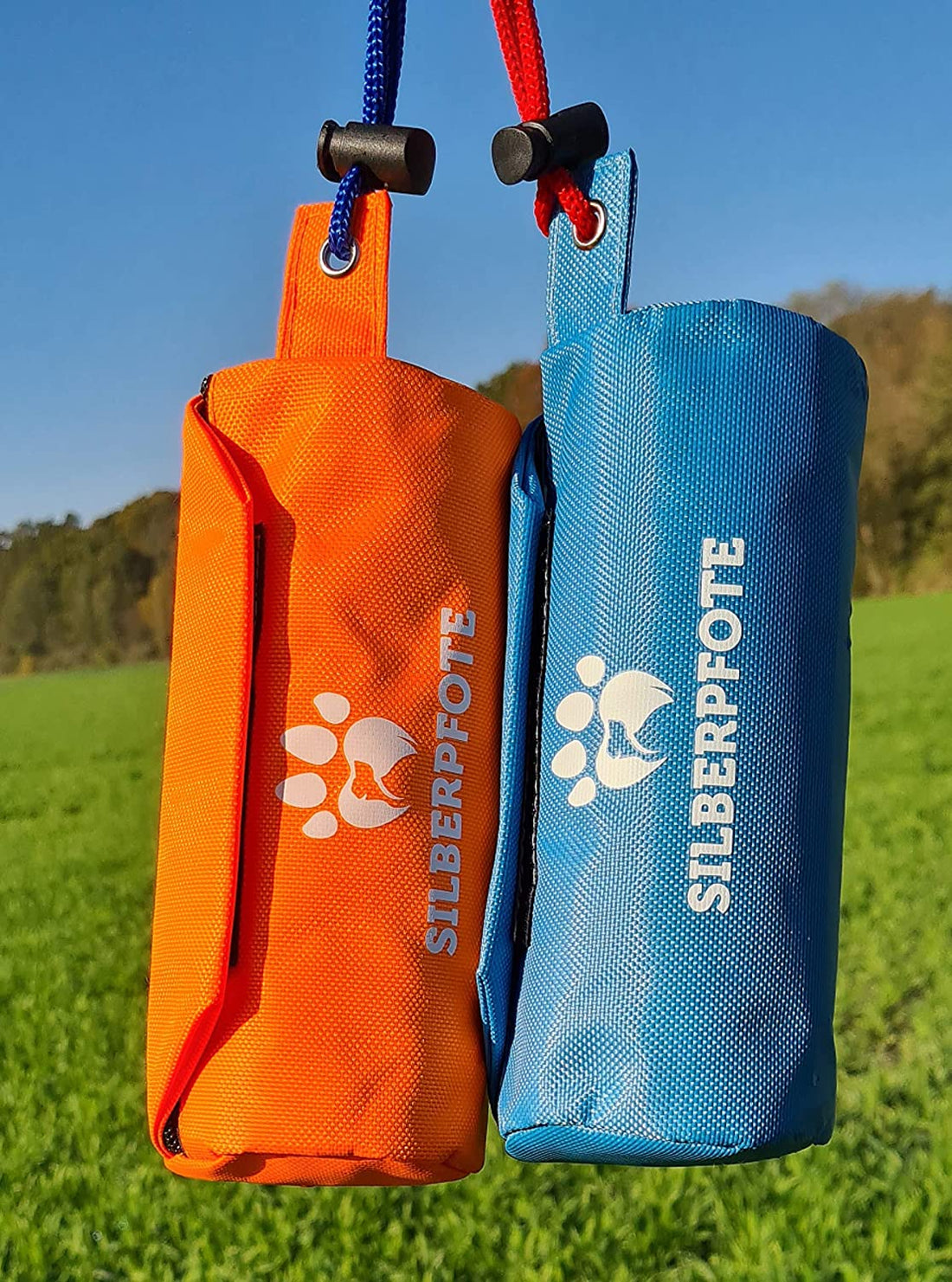
Teaching the dog to fetch
Share
Retrieving: This is how your dog masters this task
Fetching is a great activity for you and your dog to do together. Both the four-legged friend and his owner benefit from the variety, the shared sense of achievement and the physical exercise. In this article you will learn how to teach your dog this task, what mistakes you should avoid and why a retrieving dummy is a useful tool.
What is “real” retrieving?
The process of the retrieval task actually seems relatively simple to humans: the dog owner throws an object, the dog runs after the thrown object, picks it up and then brings it back to the human. But for our four-legged friends this is not as easy as it seems at first glance.
When the dog rushes after the object, this corresponds to his natural instincts: he activates his hunting instinct and tries to catch his prey. No problem so far, but once the dog has grabbed its prey, it normally wouldn't let go of it so quickly. The difficulty for the dog in the retrieval exercise begins after he has reached the object: he has to carry it back to the person and hand it back without tugging. And that's actually not in his nature.
But with proper practice and patience, a dog can learn to retrieve correctly, and then playing together is a species-appropriate and challenging task for him. This applies regardless of what breed it is.
The retrieving exercise offers the following advantages if it is learned and practiced correctly:
- People are strengthened in their position as “pack leader”.
- Species-appropriate task that provides a lot of exercise
- Promote a good relationship between humans and dogs
- The dog learns to control impulses
- Following commands is trained
This is what you and your dog need to play fetch
You don't need too much to have fun playing fetch together. However, it is important to have a suitable object to throw. The practice of “throwing sticks” for a long time is no longer considered contemporary. Although a stick is easy to grab when going for a walk, it is not suitable as a throwing object. A dog can sustain serious injuries from a vertically falling stick. A stick that gets stuck in the ground can also cause accidents. If the dog runs towards him, he could, for example, shove it down his throat if he opened his mouth while running and wanted to grab the stick.
Practical food bags that are used as retrieving dummies are more suitable. They pose no risk of injury and can be thrown with much more control than a stick. If you only use the food bag for practice, this also increases your chances of success. Because your dog is much more likely to know what is required of him than if you use one of his other toys. And by the way, you have the treat ready as a reward for completing the task.
In addition to the retrieving dummy, you also need a towing leash, at least if you want to train in public spaces. In order to provide sufficient freedom of movement, the leash should be at least 10 meters long. It is important to only use a towline with a harness that fits really well and has the fastening ring on the back. Otherwise, your dog could seriously injure himself because he will not think about the limited range of the leash while playing and could potentially strangle himself.
We recommend dry treats that the dog likes as a reward. At the beginning it makes sense to have some in your pocket so that you can reward the dog promptly when it has done something right.
This way, your dog can learn to retrieve in a species-appropriate manner
If all the necessary tools are available, it can begin: your dog can start and learn to retrieve! A two-step approach has proven successful. First, the dog should be familiarized with the retrieving dummy and pick it up. Once he has mastered this safely, he will learn in a second step to bring the food bag back to you.
Step 1: Pick up the dummy
The first step in this step is to ensure that your dog finds the food bag as exciting as possible. To do this, choose an environment that offers little distraction for the dog. The best thing to do is to fill the bag with great treats and let the dog watch. Then play with the bag a little and move it back and forth.
If your dog shows interest in the bag and wants to play along, a start has been made. If the dog wants to put the bag in his mouth, reward him immediately because we want this behavior later when retrieving. To do this, take the bag back, open it and give the dog his treat. You should always stick to the sequence “hand over bag” equals “reward”. This will prevent your dog from fearing that something will be taken away from him. The handing over of the bag is also saved as a positive result, so that fewer problems arise later.
Once releasing the bag has been practiced a few times, the dog can start using the harness and leash. To do this, they throw the retrieving dummy a few meters away. If the dog runs after you and picks up the bag, the goal of the first step has been achieved. Praise the dog and reward him immediately.
Step 2: Return the dummy
Next comes the behavior that the dog does not naturally have in his repertoire: he should carry the bag back to you and hand it over again. This is a really difficult task for some dogs.
If the dog has picked up the thrown bag, try to lure it back to you. This is a good time to introduce a command (for example, "Bring!"). If the dog comes back to you with the bag, that is a great success. Don't take the bag away from him straight away, but rather praise and reward him extensively. Then try to encourage the dog with “Give!” or “Off!” and open your hand to give them the bag. If that works, praise the dog and let him eat some of the great treats from the bag.
If one of the steps does not work immediately, there is no reason to be frustrated. Remain patient and remember that other behaviors will eventually lead to your dog understanding what you want from him. For example, if your dog runs away with the bag, over time he will realize that he cannot get to the fragrant food on his own and has to go back to you.
One step further
Once your dog has mastered retrieving on a leash, you can increase the difficulty in small stages. For example, you can choose an exercise area where the dog is exposed to some distractions.
Typical mistakes
In order not to make training unnecessarily more difficult, it is important to avoid some typical mistakes. If you follow these tips, it will be much easier for you and your dog to enjoy retrieving together.
Under no circumstances should you tug on the food bag, even if the dog does not want to give it up on command. Because then the game becomes a tug-of-war exercise for your dog and the actual meaning is lost for him.
Additionally, you should only take out the bag if you really want to exercise. The dummy should not serve as a normal toy. This makes it much easier for the dog to recognize when the retrieving exercise starts and what is required of him.
You should stop training when your dog is still having fun. Practicing until he no longer feels like it is less beneficial. "Stop when it's best," on the other hand, ensures that the training is positively associated and your dog is excited the next time it starts again.
Finally, there are some dogs that just don't like retrieving. You should never force such a dog to exercise. If attempts with favorite treats and a hungry dog are unsuccessful, you may want to avoid this type of training. You're sure to find another great activity that you can enjoy with your dog. Fortunately, dogs that are “unwilling to retrieve” are the exception.

